How to deal with a moth on a gooseberry?

Gooseberry fire is a common pest of garden shrubs. Gooseberries are especially harmful. What this insect looks like, what signs indicate its appearance, and how to deal with it, we will tell in the article.
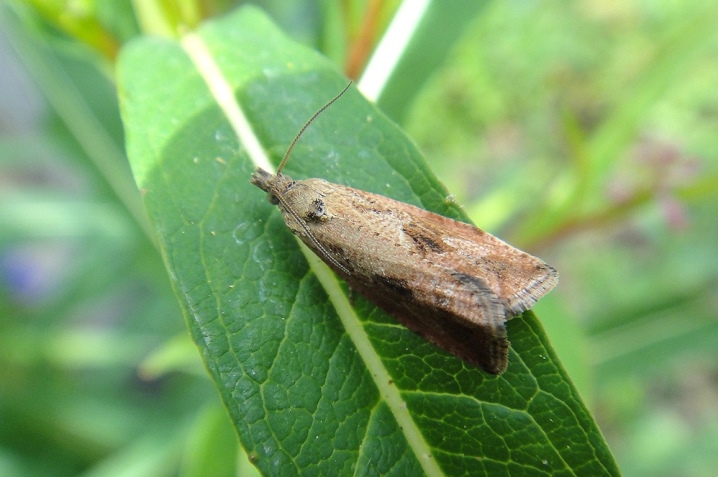
What does a pest look like?
The gooseberry firefly is a family of harmful butterflies that belong to the order of Lepidoptera and cause great damage to the garden. At the moment, there are approximately 6200 species of this insect. Moth is often found on plants such as gooseberries, currants, pears, figs, and others.
It is a large butterfly, which is an insect with brownish-gray wings, and antennae can be found on its head. Its wingspan can range from 24 to 36 mm.
If we talk about the egg-laying of this insect, then at one time it is capable of laying about 200 eggs. At the same time, only one generation of parasites fully develops in one season. However, under favorable conditions, which are high temperatures and low moisture levels, there is a likelihood of the development of a second generation.

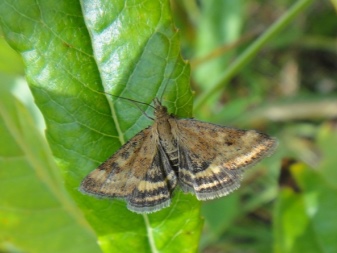
It is worth mentioning the larvae of this caterpillar, since they are the main pests. The very same adult butterfly is absolutely harmless - the only problem is that it is because of it that parasitic caterpillars appear.
The fire pit caterpillar is green or yellowish-green in color and has a black head. Its body is completely covered with small villi. The size of this caterpillar is within 5 centimeters, but mostly smaller individuals are found. If you run the situation, this insect can destroy about 80% of the plants, simply by feeding on their foliage.
After the caterpillar phase, the insect becomes a pupa, which occurs after a month or less. The timing of the transition to a new stage depends only on the air temperature: the higher the indicator on the thermometer, the faster the transition will take place. The pupa of this butterfly is about 3 centimeters long, has a light green color and is located in a loose cocoon. This phase lasts approximately 2 weeks, then adult and mature butterflies appear.
Throughout the winter, this pest also stays in the form of a pupa, which is distinguished by a brownish color, looks like parchment in texture.
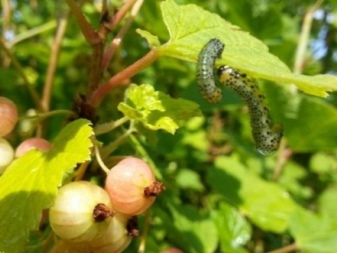
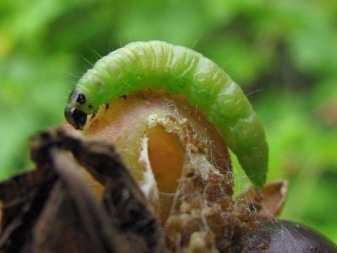
Signs of infection
Recognizing the appearance of a fire on a gooseberry bush is not difficult. This is evidenced by a number of signs.
So, on the leaves and shoots of the gooseberry, it is easy to see a thin cobweb that gradually entwines the entire plant, as well as the remnants of the skins of the larvae and the vital activity of the parasite, which exude an unpleasant odor. In this case, green residues from the plant often lie on the ground. In addition, you can see that the fruits of the planting, which gradually dries out, begin to deteriorate quickly and subsequently fall off.
It is not difficult to find the caterpillars themselves on the plant.

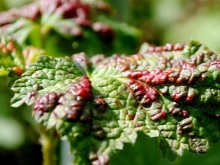
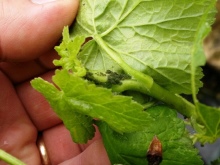
Folk remedies
Traditional methods of dealing with firefighters are not famous for their effectiveness. They are able to save your plants only if the situation is not neglected, and you managed to find the harmful insect in a timely manner, that is, before it had time to fully breed.
So, you can scare off the fire with the help of a solution based on dry mustard... You will need 100 grams of product and a bucket of water.Next, it needs to be stirred and insisted for about 2 days in a warm place. After this time, the mixture must be diluted with an additional amount of water in a ratio of 1 to 2, after which the plants can be treated.
It will be useful to use and coniferous mixture. In order to prepare this remedy, you will need to collect 200 grams of needles, add 2 liters of pre-heated water to it. The mixture should be infused for 7 days, while stirring it periodically. After 7 days, the solution is filtered and diluted with water in a ratio of 1 to 10.
The plants can then be sprayed every 7 days during the flowering phase.
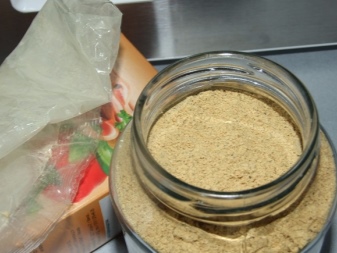
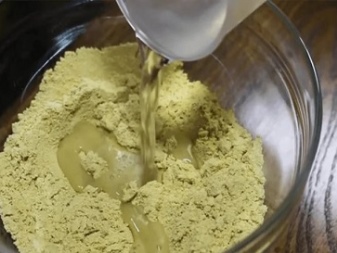
You can also use raw materials such as tobacco... To prepare the product, you will need 400 grams of the main component, which must be poured into a 10-liter bucket of water. All this should be infused for 2 days, after which the mixture is again diluted with 10 liters of water. Starting with flowering, gooseberry bushes are treated with the composition, doing this at intervals of 7 days.
It will be useful to use and wood ash, to get rid of the flames in your garden. For the solution, you will need 1 kilogram of the component and a bucket of water. All this must be thoroughly mixed and left to infuse for 7 days. After a good tincture, I filter the product, then spray the plantings during the period of ovary formation. For greater stability of the solution, a couple of drops of liquid soap are usually added to it.
Often, to eliminate fire, they use and pyrethrum powder.
With this tool, it is necessary to powder the bushes, they do it at intervals of a week.
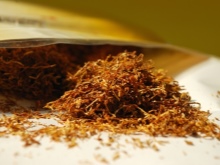
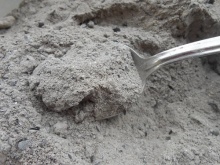

Another folk solution is based on chamomile... To prepare the product, you will need 50 grams of pharmacy chamomile and 5 liters of hot water. Within 2-3 hours, the solution should be infused, cooling down along the way, after which it can be used on plants.
In addition, there are several other ways to scare the fire away from your garden.
For one of them, you will need to build light trap, for this by painting an ordinary cardboard box in bright yellow light and applying glue to it. Such a device will need to be placed next to a bush or under lanterns, where harmful insects will fly.
Another assistant is elder... A branch of this plant with inflorescences should be placed in the central part of the bush, which will scare off parasites. Elderberry is also suitable for preparing solutions. You will need 10 grams of dried plant flowers and a liter of water.
The solution should be infused for about 2 days, after which it is filtered and applied to plants.
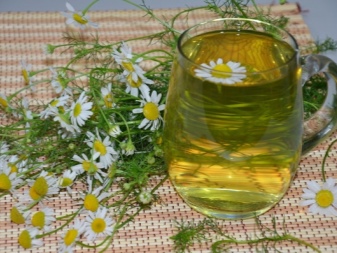

How to deal with chemicals?
Chemical methods will help get rid of the fire much faster than folk remedies. They are highly effective and fast acting. You only need to process the plant once to be sure of this. However, chemicals also have their drawbacks. They are not safe for humans and the environment in general. Using them, you will get rid of not only harmful insects, but also useful ones. Therefore, chemical treatment is necessary only in advanced cases.
So, for adult insects, chemicals such as "Actellik", "Decis Profi", "Engio" and others... These are contact chemicals that are recommended for use with systemic drugs for greater effectiveness - these include, for example, Aktara and Confidor Maxi.

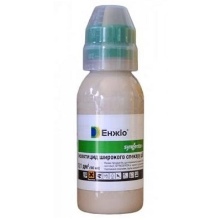

In order to deal with the caterpillars of the fire, such means as, for example, "Lepidocide" and "Match".
Using such means, be sure to observe the dosage, follow the instructions, and also do not neglect the safety rules and use personal protective equipment: mask, goggles, rubber gloves, respirator.
In addition, do not carry out the treatment with chemicals at an air temperature above +25 degrees, otherwise there is a risk of causing great harm to your shrubs.
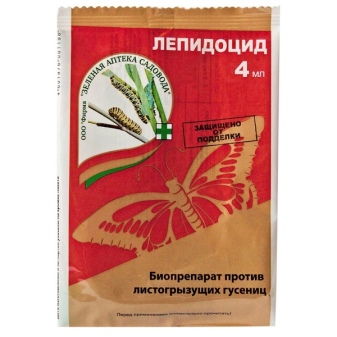

We use mechanical methods
Usually this method is used in combination with any other.
To begin with, it is necessary to arrange the fabric around the bush, after which the bush must be shaken well. This way, you can scare the malicious caterpillars. At the same time, they will curl up into a ring and fall from the bush directly onto the fabric, trying to escape from danger. After this procedure, the fabric must be rolled up and burned.
This method is ineffective. Some parasites can still remain on the plant, or even for the winter until the next season, hiding in the soil. To prevent this, it is necessary to dig the ground several times. In this way, pests will find themselves in the cold and will soon die.
In addition, another mechanical method can be used. To do this, you will need to collect all the affected fruits with your own hands, cutting them off. If there is any doubt about whether the fruit is healthy or not, it is also recommended to cut it off, which will save the rest of the berries and minimize the damage caused by the fire.
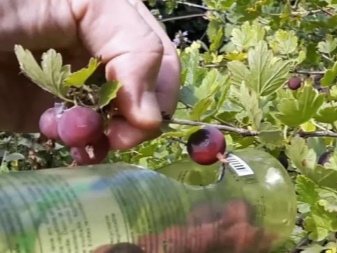
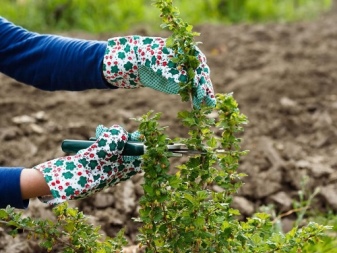
Prevention measures
Preventive measures will not help get rid of the fire, but they may well help to prevent its appearance or spread.
So, first of all, you need to devote time to collecting old plant residues, which needs to be done after the final harvest. This will help get rid of the larvae that may have remained on the foliage. If there were a lot of parasites over the past season, then it is recommended to change 10 centimeters of soil to a new one.
In order for the parasites remaining in the soil to be unable to declare themselves in the spring, the trunk circle must be covered with dense black agrofibre. In the spring, when the snow has already melted, the soil can be thoroughly shed with hot water, which will help to finally get rid of the remaining parasites.
Plants should also be periodically inspected for pests. This way you can get rid of them early on, preventing them from spreading in large quantities. For prevention, you can also spray the shrubs with folk solutions, which will scare the butterfly away from your plantings.
In addition, it is recommended to choose varieties of shrubs that are highly resistant to attacks from various harmful insects.

You can learn how to get rid of gooseberry fire caterpillars in the video below.













The comment was sent successfully.